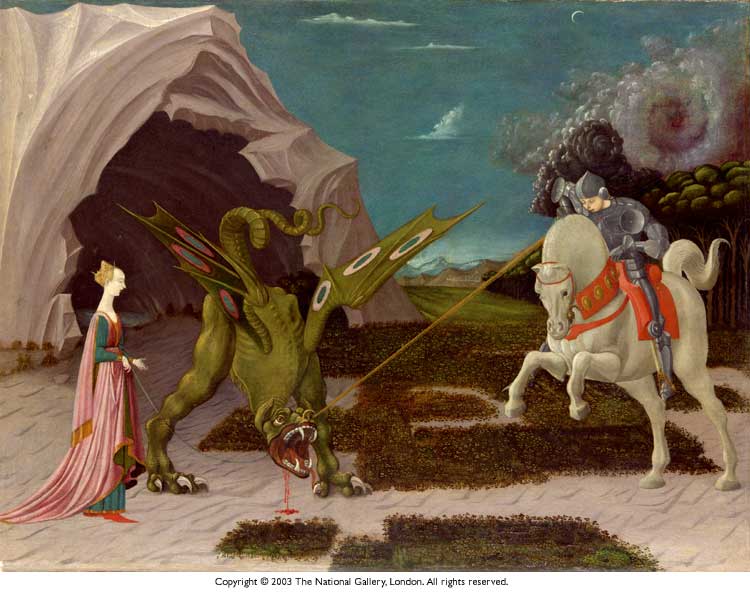On the eve of St George’s Day, this week’s picture is Paolo Uccello’s depiction of the eponymous saint halfway through his celebrated dragon-slaying act. Painted in the mid-fifteenth-century, it can be seen in the National Gallery in London.
The artist’s principal source was the account of St George’s life and miracles given in Jacobus da Voragine’s popular ragbag of hagiographical apocrypha, The Golden Legend:
“It happened that George once travelled to the city of Silena in the province of Lybia. Near this town there was a pond as large as a lake where a plague-bearing dragon lurked; and many times the dragon had put the populace to flight when they came out armed against him, for he used to come up to the city walls and poison everyone who came within reach of his breath. To appease the fury of this monster the townspeople fed him two sheep every day; otherwise he would invade their city and a great many would perish. But in time they were running out of sheep and could not get any more, so, having held a council, they paid him tribute of one sheep and one man or woman. The name of a youth or maiden was drawn by lot, and no one was exempt from the draft; but soon almost all the young people had been eaten up. Then one day the lot fell upon the only daughter of the king, and she was seized and set aside for the dragon…when, weeping, he had blessed her, she started toward the lake.”
At which point the gallant St George, who just happened to be passing at the time, decided to intervene. In Uccello’s interpretation of the story the saint has been made to embody an ununusal blend of pragmatism and romance. He is a...

ITP 53: St George and the Dragon, by Paolo Uccello
22-04-2001

